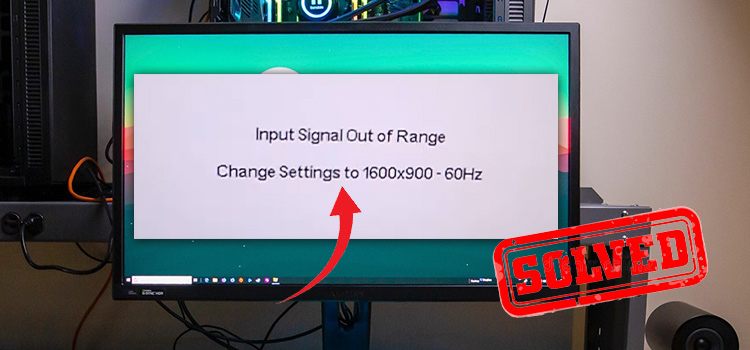Does Thermal Paste Need to Be Reapplied (A Thoroughly Guide)
Yes, thermal pastes need to be reapplied, but it can take years for thermal paste to degrade. Many factors affect thermal paste shelf life, including the company of thermal paste used, whether it is metal, carbon, or silicon, storage time, and storage temperature.
If the thermal paste looks watery, hard, or flaky, you know the thermal paste has deteriorated and should be discarded immediately. If the thermal paste inside the CPU is dry, you should replace the thermal paste. Remove this with an isopropyl alcohol pad and apply a fresh thermal paste.
How Often Should You Reapplied Thermal Paste?
It’s difficult to tell how often thermal paste needs to be changed. Different people have different perspectives on the longevity of applied thermal paste. This is because many factors are involved. So, it’s best to know what causes dryness so you can evaluate it yourself.

Is It Time to Reapply the Thermal Paste?
When to reapply paste to your computer is a question that depends on many factors. The most important of these is the type of cooler you use and how often you clean your system.
For those using stock coolers, the thermal paste should be reapplied whenever the heatsink is removed for cleaning or whenever there is visible wear. This usually happens with most users every 6-12 months.
For those using aftermarket coolers, it should only be replaced if it becomes discolored or stiff. How often this happens varies to cooler, but is typically 6 to 24 months. It’s also worth noting that some CPUs come with a pre-applied thermal compound which doesn’t need to be replaced unless it gets damaged or gets covered in dust.
What Happens if You Don’t Reapply the Thermal Paste?
The thermal paste aids conductivity, and it comes as either a pre-applied substance or an after-market application. It is used to bridge those mini-gaps between the lid of the computer CPU and the floor level of the heat sink.
Without the thermal paste, there will be far less contact between the heat sink and CPU lid surfaces. The microscopic gaps can trap air and other particles in the CPU, and the thermal paste helps prevent such problems. For this reason, you need to apply the paste when necessary constantly.
Why Do You Need a Thermal Paste?
The metal base of your computer’s CPU cooler and the IHS of your CPU looks very smooth and efficient in appearance, but these items have some microscopic holes. A small hole or imperfection between the IHS and CPU cooler can lead to poor heat transfer and eventual CPU system collapse.
These defects prevent the surfaces of the two components from making full contact with each other. Thermal paste fills these ridges or holes to ensure proper heat flow around the device. The thermal paste helps the CPU cooler do its job. This means far fewer performance issues, including throttling.
Different brands of a thermal compound may look similar, but do not use the same brand on different devices. To avoid complications, use a thermal paste made for your specific CPU. Some thermal pastes can thicken faster than others, requiring new paste to be applied each time.
The properties of each thermal compound are listed in the product manual. Therefore, we can know about the temperature range and thermal conductivity of the product. The more we learn about thermal compounds, the better we understand their appropriate uses.
How to Check If Thermal Paste Has Gone Bad?
Different manufacturers have different expiration dates for thermal paste. If you keep an open thermal paste tightly closed in a dry place, it will most likely last for years.
Here is a complete guide to check if your thermal paste has expired:
- Open the thermal paste and discard a small amount of paste in the mouth of the syringe.
- Squeeze the plunger to release more thermal grease.
- Spread a small amount of thermal paste on the metal surface to see if it is even and smooth.
- If the thermal paste looks watery, caked, dry, or flaky, it has passed its expiration date.
- But if it’s smooth and consistent, it’s fine to use.
What Might Shorten Your Thermal Paste Lifespan?
There are several factors that affect the life of thermal paste. Most of these are due to different forms of intensity that affect how the paste breaks down.
CPU usage is one of the biggest factors affecting paste degradation rate. Think in terms of temperature. Vigorous activity generates heat, so the thermal compound’s heat-conducting properties put more stress on it.
Placing the PC in direct sunlight or direct heat exposure can further increase the effect of temperature on thermal paste life.
Quality also has a big impact on the life and efficiency of thermal compounds. A lower-quality paste will not last as long as a higher-quality alternative and will need to be replaced more often. Airflow within a PC build can affect the overall temperature, thus putting more stress on the paste.
The quality of the heatsink or cooler also has a big impact on the thermal paste. The more “the paste has to work” to make up for the lack of low-quality elements, the shorter its life.
How Long Does Thermal Paste Last?
In most cases, you shouldn’t need to reapply more than once every few years, though you should replace your paste if you remove your cooler for any reason. You may also want to consider reapplying thermal paste if you find your CPU temperatures are climbing.
If in doubt, consult the thermal paste manufacturer, and follow their recommendations.
Conclusion
Thermal paste is crucial to system health, but it is not a component that should be replaced as often as necessary. However, how often you need to reapply thermal paste depends on your usage, the quality of the thermal paste, the condition of the air cooler, etc.
Subscribe to our newsletter
& plug into
the world of technology





